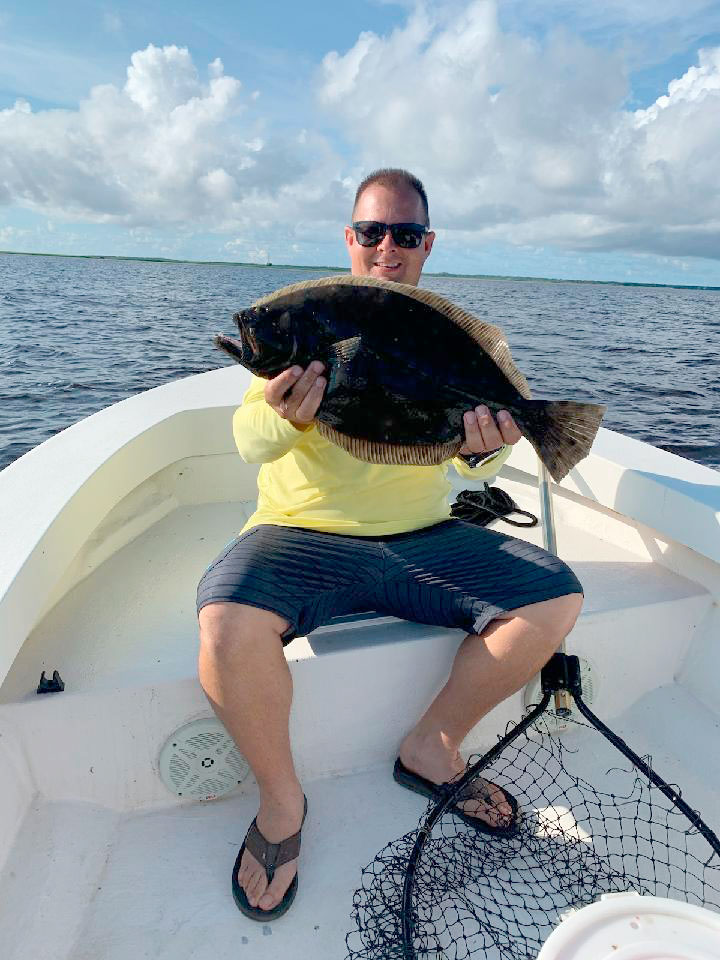
Big flounder frenzy in SE NC
North Carolina’s 2022 flounder season will only last the month of September and with a daily limit of only one flounder, it will be difficult to fill your freezer. Still, many fishermen will try. This is fishing and nothing is guaranteed, but southeastern N.C., with its abundance of ocean and inshore flounder habitat, is arguably the top spot in the state for flounder. It has not only good numbers of flounder, but also large ones.
The waters of Snows Cut, which connect the Intracoastal Waterway to the Cape Fear River at Carolina Beach, gave up the current state record 20-pound, 8-ounce flounder to Harold Auten in 1980. Some folks believe this is where the flounder that one day displaces Auten’s record will be caught.
Capt. Dennis Barbour of Island Tackle and Hardware (910-458-3049) in Carolina Beach said they have been seeing good numbers of doormat flounder already this year. The closed season required them to be released to continue growing. Barbour said in addition to Snows Cut, numerous artificial reefs, blockade runner wrecks and rock structure in the ocean hold nice flounder. And they often lie waiting in the inlets and inshore around the many oyster rocks, bulkheads, spoil islands, docks and other structure in the Cape Fear River and numerous creeks that feed it.
Live bait is king
“I’m a live bait guy, and I like big live baits,” Barbour said. “I’ll fish baits, like king mackerel-size pogies and corn cob mullet that many people think are too large. But they keep the bait thieves at bay and attract larger flounder. Fishing these baits takes a lot of patience. But they catch flounder – big flounder. A flounder will grab a large bait and settle back to the bottom, sometimes holding it until it stops struggling before turning it to swallow it. He has to turn the bait to head-first to be able to swallow it. And if you try to set the hook too quickly, you’ll miss and pull the bait away.”
Barbour said flounder typically hold around structure, but also move across bare bottom heading into the Cape Fear River to spawn. Current that carries baitfish is the key to catching them. And the Cape Fear is a large river with a 4- to 6-foot tide range and predictable tidal currents. The currents are strong in the channels, but some places allow getting out of the stronger currents. These places are where Barbour prefers to fish.
Barbour uses his own Carolina rigs and prefers to fish low tide when it first begins rising, and high tide when it first begins falling. During these times, the current is light and the water is moving slow. The flounder know this too and usually feed actively.





Be the first to comment